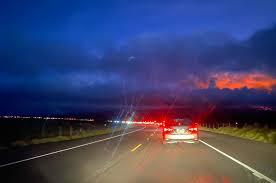Savoring the Exquisite Flavors of Kona Coffee

The Rich and Flavorful World of Kona Coffee
When it comes to premium coffee, few varieties can match the exquisite taste and quality of Kona coffee. Grown on the slopes of the Mauna Loa volcano in the Kona district of Hawaii, this unique coffee is renowned for its rich flavor and smooth finish.
Kona coffee beans are cultivated in ideal conditions – rich volcanic soil, ample sunshine, and just the right amount of rainfall. These factors contribute to the distinctive flavor profile that sets Kona coffee apart from other varieties. With notes of caramel, chocolate, and a hint of fruitiness, every sip of Kona coffee is a delightful experience for the senses.
What makes Kona coffee even more special is the meticulous care that goes into its production. From hand-picking only ripe cherries to sun-drying and roasting with precision, every step in the process is carried out with dedication and expertise. This attention to detail ensures that each batch of Kona coffee meets the high standards that have made it a favorite among coffee connoisseurs worldwide.
Whether you prefer your coffee black or with a splash of cream, Kona coffee promises a luxurious drinking experience that is sure to delight even the most discerning palates. So next time you reach for your morning cup of joe, consider treating yourself to a taste of Hawaii with a steaming mug of freshly brewed Kona coffee.
5 Essential Tips for Enjoying Authentic Kona Coffee
- Purchase kona coffee from reputable sources to ensure authenticity and quality.
- Store kona coffee beans in an airtight container away from light, heat, and moisture to maintain freshness.
- Grind kona coffee beans just before brewing to preserve the flavor and aroma.
- Experiment with different brewing methods such as pour-over, French press, or espresso to find your preferred taste profile.
- Enjoy kona coffee black to fully appreciate its unique flavors, or add a splash of cream or sugar according to your preference.
Purchase kona coffee from reputable sources to ensure authenticity and quality.
When it comes to enjoying the rich and distinct flavor of Kona coffee, it is essential to purchase from reputable sources to guarantee authenticity and quality. By choosing trusted sellers, you can be confident that you are getting genuine Kona coffee beans that have been carefully cultivated and processed to deliver the unique taste that this variety is known for. Whether you are a seasoned coffee enthusiast or a casual drinker looking to elevate your morning routine, sourcing your Kona coffee from reliable sources ensures a premium and satisfying coffee experience every time.
Store kona coffee beans in an airtight container away from light, heat, and moisture to maintain freshness.
To preserve the freshness and rich flavor of Kona coffee beans, it is essential to store them in an airtight container, shielded from light, heat, and moisture. By protecting the beans from these elements, you can ensure that each cup brewed retains the delightful aroma and nuanced taste that make Kona coffee so beloved among coffee enthusiasts. Proper storage is key to prolonging the shelf life of these precious beans and savoring their exceptional quality with every sip.
Grind kona coffee beans just before brewing to preserve the flavor and aroma.
For the best possible cup of Kona coffee, it is recommended to grind the Kona coffee beans just before brewing. By grinding the beans right before brewing, you can preserve the rich flavor and aromatic oils that give Kona coffee its distinctive taste. This ensures that you experience the full depth of flavor and aroma with every sip, making your Kona coffee drinking experience truly exceptional.
Experiment with different brewing methods such as pour-over, French press, or espresso to find your preferred taste profile.
To fully appreciate the complex flavors of Kona coffee, it’s worth experimenting with various brewing methods such as pour-over, French press, or espresso. Each brewing technique brings out different aspects of the coffee’s flavor profile, allowing you to tailor your brewing process to suit your preferences. Whether you enjoy the bold intensity of espresso or the smooth richness of a French press brew, exploring different methods will help you discover the perfect way to savor the unique taste of Kona coffee.
Enjoy kona coffee black to fully appreciate its unique flavors, or add a splash of cream or sugar according to your preference.
To truly savor the distinct flavors of Kona coffee, it is recommended to enjoy it black. This allows you to fully appreciate the rich and smooth taste that sets this premium coffee apart. However, if you prefer a touch of sweetness or creaminess in your cup, feel free to add a splash of cream or sugar according to your personal taste preferences. Whether enjoyed black or with a hint of added flavor, Kona coffee promises a delightful drinking experience that is sure to awaken your senses and elevate your coffee ritual.
